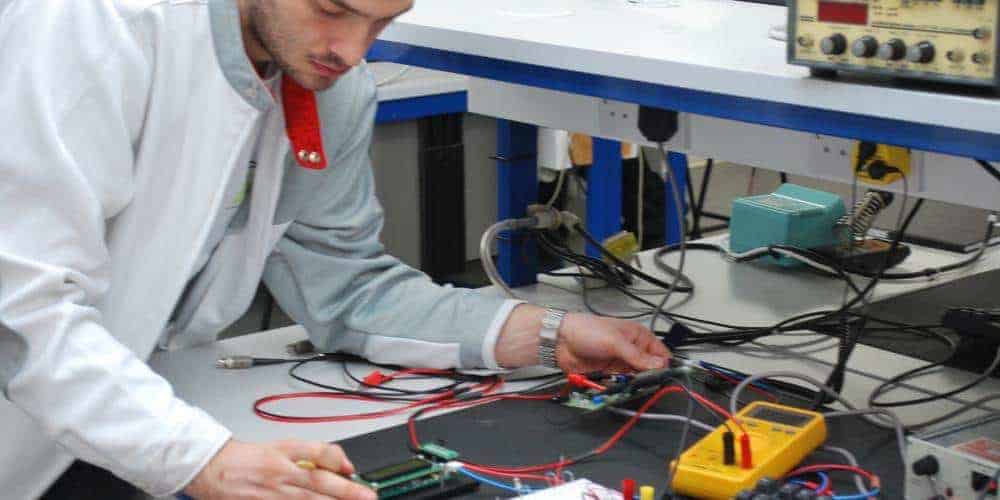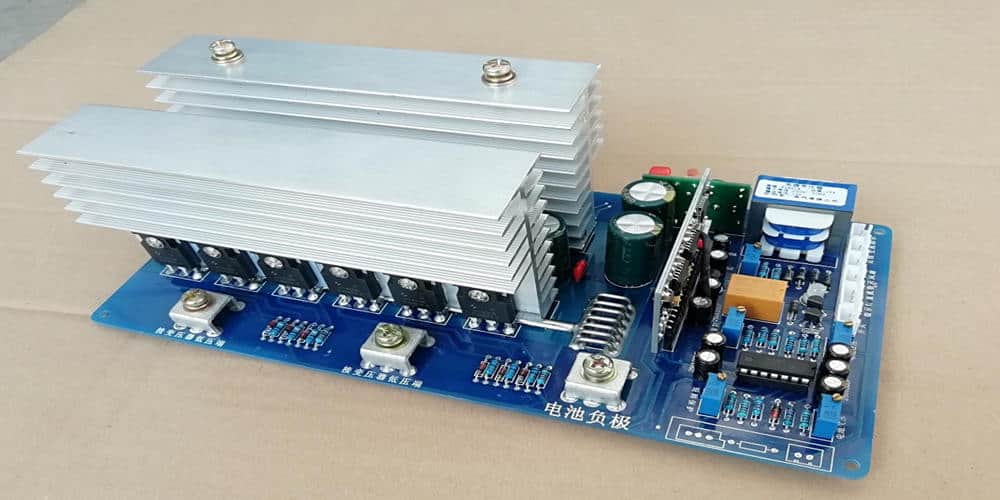Enclosure design is a crucial aspect of electronic equipment development. It involves designing protective cases that shield electronic equipment from environmental factors such as dust, moisture, electromagnetic interference, and physical impact. The design of enclosures can significantly impact the performance, reliability, and safety of electronic devices.
Designers must consider various factors such as the size, shape, and material of the enclosure, as well as the type of equipment it is intended to protect. A well-designed enclosure should not only protect the electronic equipment but also allow for proper ventilation and heat dissipation. In addition, enclosures must comply with industry standards and regulations to ensure the safety of users and meet legal requirements.

Design Considerations
When designing an enclosure for electronic equipment, there are several factors that must be taken into consideration. These include environmental factors, electromagnetic interference, and thermal management.
Environmental Factors
Environmental factors such as temperature, humidity, and vibration can have a significant impact on the performance and lifespan of electronic equipment. Therefore, the enclosure design must be able to protect the equipment from these factors.
To achieve this, the enclosure must be made of materials that can withstand the environmental conditions of the intended use. For example, if the equipment will be used in a harsh outdoor environment, the enclosure must be able to protect the equipment from rain, dust, and extreme temperatures.
Electromagnetic Interference
Electromagnetic interference (EMI) can cause malfunction or damage to electronic equipment. Therefore, the enclosure design must be able to protect the equipment from EMI.
To achieve this, the enclosure must be made of materials that can shield the equipment from electromagnetic waves. Additionally, the enclosure must be designed to prevent the equipment from emitting electromagnetic waves that could interfere with other equipment.
Thermal Management
Electronic equipment generates heat during operation, and if the heat is not dissipated properly, it can cause malfunction or damage to the equipment. Therefore, the enclosure design must be able to manage the thermal conditions of the equipment.
To achieve this, the enclosure must be designed to allow for proper ventilation, heat dissipation, and thermal insulation. Additionally, the enclosure must be made of materials that can withstand high temperatures.
In summary, when designing an enclosure for electronic equipment, it is important to consider environmental factors, electromagnetic interference, and thermal management. By taking these factors into consideration, the enclosure can be designed to protect the equipment and ensure its optimal performance.
Enclosure Materials

Plastic Enclosures
Plastic enclosures are a popular choice for electronic equipment due to their lightweight, cost-effectiveness, and ease of customization. They can be molded into various shapes and sizes, making them ideal for small or irregularly shaped devices. Additionally, plastic enclosures are often resistant to chemicals, moisture, and impact, which can help protect the internal components of the device.
However, plastic enclosures may not be the best choice for devices that generate a lot of heat, as they may not be able to dissipate heat as efficiently as metal enclosures. Additionally, plastic enclosures may not be as durable as metal enclosures and may crack or break under extreme conditions.
Metal Enclosures
Metal enclosures are often used for electronic equipment that requires high durability and protection against environmental factors such as moisture, dust, and electromagnetic interference. They are also better at dissipating heat than plastic enclosures, making them suitable for devices that generate a lot of heat.
Metal enclosures can be made from various materials such as aluminum, steel, and stainless steel. Each material has its own unique properties, such as corrosion resistance, strength, and weight. Additionally, metal enclosures can be coated or painted to provide additional protection against environmental factors.
However, metal enclosures are often more expensive than plastic enclosures and may require additional processing steps such as welding or soldering. They are also heavier and may not be suitable for small or portable devices.
In summary, both plastic and metal enclosures have their own unique advantages and disadvantages. The choice of enclosure material will depend on the specific requirements of the device and the intended use.
Enclosure Types
When designing electronic equipment, one of the most important considerations is the type of enclosure that will be used. Enclosures provide protection for the electronic components from environmental factors such as dust, moisture, and temperature fluctuations, as well as from physical damage.
Rackmount Enclosures
Rackmount enclosures are designed to be mounted in standard equipment racks. These types of enclosures are commonly used in data centers, server rooms, and other environments where space is at a premium. Rackmount enclosures come in a variety of sizes and configurations to accommodate different types of equipment.
Desktop Enclosures
Desktop enclosures are designed to sit on a desk or other flat surface. These enclosures are often used for small electronic devices such as routers, modems, and small computers. Desktop enclosures can be made from a variety of materials, including plastic, aluminum, and steel.
Handheld Enclosures
Handheld enclosures are designed to be held in the hand. These types of enclosures are commonly used for portable electronic devices such as cell phones, handheld gaming devices, and portable music players. Handheld enclosures can be made from a variety of materials, including plastic, aluminum, and silicone.
When choosing an enclosure type, it is important to consider factors such as the size and shape of the electronic components, the environment in which the equipment will be used, and the desired level of protection. By selecting the appropriate enclosure type, designers can ensure that their electronic equipment is protected from damage and operates reliably for years to come.
Design Process

The design process for enclosure design of electronic equipment involves three key stages: conceptual design, prototyping, and testing.
Conceptual Design
During the conceptual design stage, the designer develops a basic idea of what the enclosure will look like and how it will function. This involves considering factors such as the size and shape of the enclosure, the materials to be used, and the placement of components within the enclosure. The designer may use computer-aided design (CAD) software to create a 3D model of the enclosure, which can be used to test different design options and make adjustments.
Prototyping
Once the conceptual design is complete, the designer moves on to the prototyping stage. This involves creating a physical model of the enclosure using the chosen materials. The prototype allows the designer to test the design in the real world and identify any issues that need to be addressed. The designer may create multiple prototypes, making changes and adjustments as necessary until the final design is perfected.
Testing
The final stage of the design process is testing. The designer tests the enclosure to ensure that it meets all requirements and performs as expected. This may involve testing for durability, resistance to environmental factors such as heat and moisture, and compatibility with the electronic components that will be housed inside the enclosure. The designer may also conduct user testing to ensure that the enclosure is easy to use and meets the needs of the end user.
In conclusion, the design process for enclosure design of electronic equipment involves conceptual design, prototyping, and testing. By following these steps, designers can ensure that the final product meets all requirements and performs as expected.
Manufacturing

When it comes to manufacturing electronic enclosures, there are a few different methods that are commonly used. Two of the most popular methods are injection molding and sheet metal fabrication.
Injection Molding
Injection molding is a popular method for manufacturing plastic enclosures. This process involves injecting molten plastic into a mold, which is then cooled and removed to create the final product. Injection molding is a highly automated process, which makes it efficient and cost-effective for mass production.
One of the benefits of injection molding is that it allows for a high degree of design flexibility. This means that complex shapes and features can be easily incorporated into the design of the enclosure. Additionally, injection molding can produce parts with a high level of consistency and accuracy.
Sheet Metal Fabrication
Sheet metal fabrication is another popular method for manufacturing enclosures. This process involves cutting and bending sheet metal to create the desired shape of the enclosure. Sheet metal fabrication is a versatile process that can be used to create enclosures of various shapes and sizes.
One of the benefits of sheet metal fabrication is that it allows for a high degree of precision. This means that parts can be produced with a high level of accuracy and consistency. Additionally, sheet metal fabrication can be used to create enclosures that are highly durable and resistant to damage.
Overall, both injection molding and sheet metal fabrication are effective methods for manufacturing electronic enclosures. The choice between the two methods will depend on factors such as the desired material, the complexity of the design, and the production volume.

